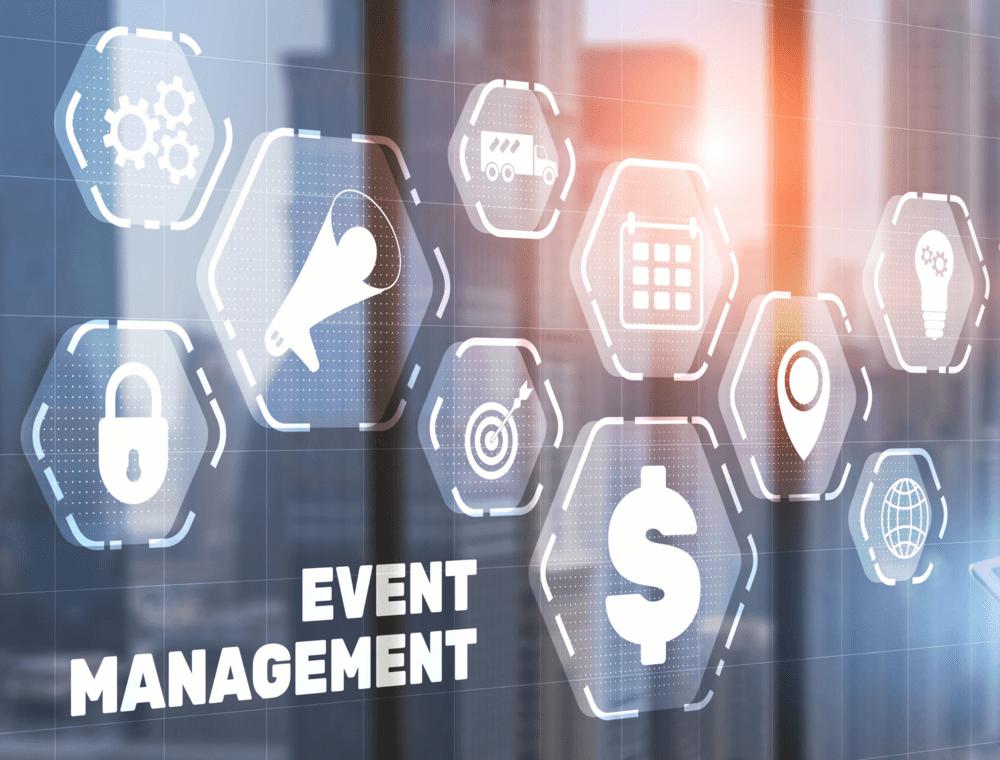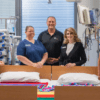So far this month we have talked about events for nonprofit organisations and how important they can be for growing your community, raising awareness for your cause, finding others who are interested in your mission, and cultivating new donors. Then we took a closer look at event planning, discussed the best tips for preparing a successful event and provided you with a checklist to use when organising your event.
This week, we’re diving into the topic of running the actual event. Once you have identified what type of event you want to hold, determined your goals, selected your team and executed all the steps in preparation for the important day – it is time to host it.
And, of course, you can do it with infoodle! We offer a complete event planning and managing system to help your event run smoothly. Below we’re sharing some of the best features of infoodle that enable you to manage your event well and make it hassle free.
Before the event
Calendar. As part of your Events Package, you get access to a calendar that not only allows you to see what is going on at a glance, but also provides you with event planning functionality that helps coordinate your event. You can add planning notes including any details concerning your event, send messages to your team and create lists of groups selected for rostering. In your CRM, you can also use Tasks to assign specific tasks to individuals or groups of people.
Forms. With our drag-and-drop Forms, it is easy to capture registrations, which is especially important because of the COVID-19 restrictions around the numbers of attendees. Forms also allow you to sell tickets. infoodle integrates with a number of payment gateways that enable you to collect payments.
Groups. Your event will likely involve different categories of people: staff, volunteers, catering team, invitees, participants and such. Splitting them into groups and subgroups in your CRM will help you manage them better by assigning tasks, adding notes or sending communication to relevant people.
Rosters. This is a feature that helps you organise your staff and volunteers according to their skills or available times and easily share instructions and information. You can create a roster, link it to your event, add various positions to the roster and then add people to those positions. You can easily email the created roster to all rostered individuals or groups or send reminders and notes to them.
Email. Use the recently upgraded infoodle email system o communicate any important event details or changes to your staff or guests. You can create an email template with your brand elements related to your event’s theme and use it to send out consistent communication to individuals or groups and subgroups you have created earlier.
Activity Boards. This fantastic new feature that can be used to advertise your upcoming event to your audience on your website (or display it on a screen in your building). There are two types of slides available here: images that allow you to share event details via full screen graphics or events that pull information from your calendar and display it as a custom designed view. You can include the information regarding when and where the event is taking place, and easily edit or add new slides if there are any changes.

During the event
Check-in system. For attendance tracking and contact tracing, infoodle provides you with a check-in system – a kiosk-like interface for managed or self check-in of individuals and families. It has been designed to be easy enough to run on a tablet. The infoodle check-in system allows pre-populating a list of people that will be attending an event for quicker searching and preplanning of attending numbers. If you are allowing visitors as “walk-ins”, these individuals can be manually added and checked-in as well.
Activity Boards. On your event day, they are especially useful if you have to multiple meetings (such as lectures or workshops, or activities for various age groups) in several different rooms. You can let people know where to go for their specific activity by displaying it on a TV monitor or your website.
Live Event Manager – you can have someone manage the process live, to make sure everything runs to schedule. If things are not, changes can be made live, and pushed to all devices simultaneously. Messages can also be sent from the manager to everyone if needed. Different groups of people will need different information, and so there are a number of layout views available to them. Musicians for instance are going to care about what song is next in the playlist and lyrics/chords, whereas an MC would want to perhaps have their notes at hand for the next segment.
Forms. If you are collecting donations or pledges during the event, running an auction where guests pay for purchased items or selling memberships and subscriptions, you can use infoodle Forms to collect the payments.

After the event
Email. The day after your event, send thank you notes to your staff and volunteers to express gratitude for all their help on the event day, or to event participants for attending. If the event was held online, you can send everyone who registered a replay link. You can also share any additional resources or invite people to any follow-up events (as well as other events held by your organisation).
Reports. Run a report to check how many people attended the event or, if you have our Finance Package, see how much money was raised (or pledged) during the event.
Notes. Add notes to individual or household profiles if there is anything that needs your team’s attention: it could be information on whether you need to contact someone later or set up a meeting, or any feedback regarding the event.
In conclusion, to ensure that you event is a success, manage it with infoodle Events package, a powerful and intuitive software tool designed to help you plan and host all types of events.
Watch a demo or talk to our product experts to find out more about infoodle CRM and Events Package!









